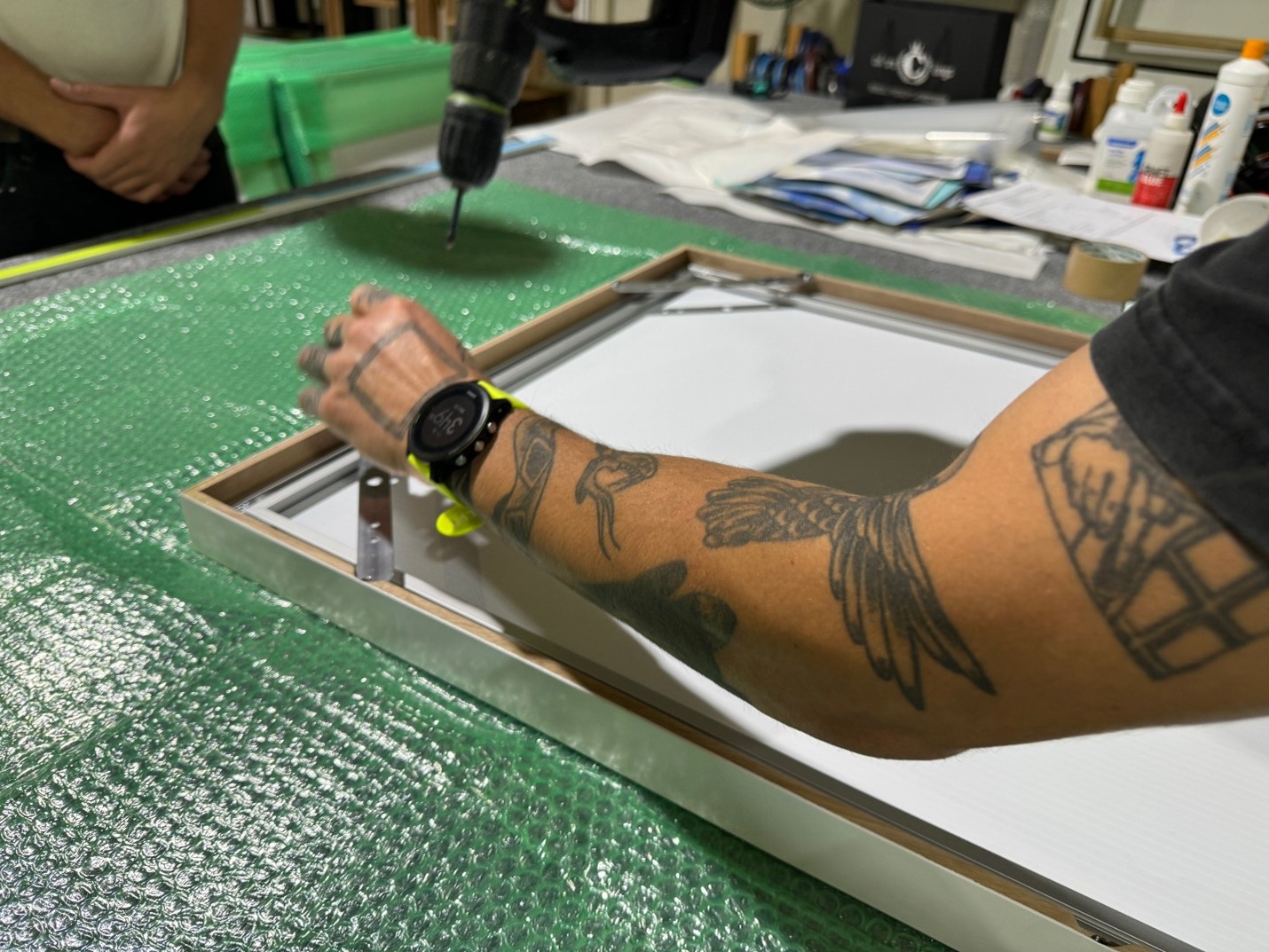Exploring the art scene across Australia, I have had the opportunity to meet some of the innovative minds in the framing industry. One such framer that is synonymous with museum framing is FINI frames in Melbourne currently helmed by two brothers, Jason and Chris Pennings. The previous owner, John Pandolfini, developed a modular framing system by working closely with one of Australia’s leading museums, the National Gallery of Art in Canberra. This is a story about sustainability.
All museum professionals know that sustainability is one of the most discussed topics currently. The uniqueness of each exhibition, museum display, and custom-built features means they do not tend to have a second life beyond the period of display. We are now at a crossroads where we must consider the longevity of displays and environmental sustainability. Both our cultural heritage and environmental conservation must be discussed synchronously. With that in mind, FINI frames developed their proprietary backloading system in collaboration with National Gallery Australia.
One strategy to increase the re-usability of frames by museums is to create standard format frames. As with raw canvases, artists typically work within a set of given sizes and formats. While variance is always present, typically, the format of a picture does not veer too far away from one another. However, in creating a frame, some customization is still preferred. Understanding this, FINI frames worked extensively on the frame’s backloading system. Some conditions include re-usability, ease, and flexibility.

After multiple iterations, FINI created their proprietary aluminum backloading system. Aluminum was chosen as it is light, corrosion-resistant and has a strong structural integrity even after multiple uses. Once an artwork is positioned, it is then secured with an aluminum frame with a spring load along the corners for security, reducing the need for archival mounting tapes. This greatly reduces the number of materials needed in creating a frame.



One of the major benefits of the FINI frame is the ability to frame remotely. High-valued art pieces do not have to be sent to their workshop for framing. For example, an artwork in Singapore does not need to travel all the way to Melbourne to be framed by FINI. The museum can provide FINI with the measurements and specifications required for the frames and FINI will create them at their workshop and ship them out once it has been built. This greatly reduces the logistical burden to transport the artwork and the risks involved. The artwork can also be framed onsite in the museum. The frame is created in the manner of “plug and play” and that the museum technicians are able to install the frames of the artwork themselves.
Such ease has made FINI frames synonymous with modular-styled museum frames. Most major institutions in Australia have come to know this style of frames as “The FINI frame”. Apart from this, FINI frames uphold their standards in accordance with requirements of conservation and archival in the museum industry. Each part of the FINI frame, is reusable, replaceable, and repairable.
Apart from framing, FINI frames is also a strong supporter of the Arts. They are a major sponsor one of Australia newest art festival, Photo Australia. Most recently, FINI frames was responsible for producing the outdoor art installations of Photo ‘24 in Melbourne, Victoria.

Tru Vue is proud to have FINI frames as one of our brand ambassadors in Australia. As a forerunner of conservation framing in Australia, their practices align with the Tru Vue philosophy of providing the very best quality products, with longevity and sustainability top of mind.
Share this Article:
This article is intended for educational purposes only and does not replace independent professional judgment. Statements of fact and opinions expressed are those of the author(s) individually and, unless expressly stated to the contrary, are not the opinion or position of Tru Vue or its employees. Tru Vue does not endorse or approve, and assumes no responsibility for, the content, accuracy or completeness of the information presented.